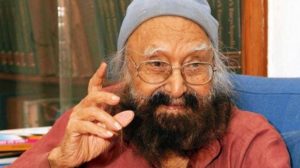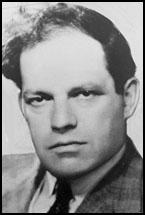We have decided to create the most comprehensive English Summary that will help students with learning and understanding.
Discovering Tut: The Saga Continues Summary in English by AR Williams
Discovering Tut: The Saga Continues Summary in English
Tut, the last heir of a powerful family that had ruled Egypt, died a teenager. He was buried and, with the passage of time, forgotten. But after the discovery of his tomb in 1922, the modem world wondered about the cause of his untimely death. He was brought out of his tomb and a CT scan was done to ascertain the reason of his death.
It was 6 pm, on 5 January 2005 when King Tut was taken out from his burial tomb after a span of 3,300 years. The weather—dusty, and cloudy—was eerie. The mummy was then put into a CT scanner to investigate the continuing uncertainty of the death of this young ruler who died an untimely death.
Multitudes of tourists from around the world came to visit the tomb to pay their respects. They stared at the murals on the walls of the burial chamber and looked at Tut’s gilded face on the lid of his mummy-shaped outer coffin. The visitors were curious and thoughtful. Some feared the pharaoh’s curse would befall those who disturbed him.
Zahi Hawass, Secretary General of Egypt’s Supreme Council of Antiquities, said that the mummy was in very bad state because of the manner in which Howard Carter, the British archaeologist, who in 1922 had discovered Tut’s tomb, had gone about investigating the contents of the tomb. He had then found the richest royal collection ever. There were the dazzling works of art in gold that had caused a sensation then and continue to draw people’s attention even today. Everyday things such as board games, a bronze razor, linen undergarments, cases of food and wine had also been buried with the young pharoah.
Carter documented the pharaoh’s treasures that were buried with him. He then began looking into his three nested coffins. In the first, he found that the burial cloth was decorated with garlands of willow and olive leaves, wild celery, lotus petals, and cornflowers. This helped him conclude that the King was buried in March or April. When he reached the mummy, he realised that the ritual resins had solidified, cementing Tut to the bottom of his solid gold coffin.
Carter used the hot sun in Egypt to loosen the resins. For a number of hours he put the mummy outside in the sun that heated it to 149 degrees Fahrenheit. But it was futile. He stated that the mummy had to be cut from under the limbs and trunk before it was possible to lift the king’s remains. At that time, Carter had had no option. Had he not done this, thieves would have attacked the guards and robbed the place to remove the gold.
The royals believed that they could take their riches with them after death. Hence King Tut was given abundant jewellery and all of pure gold. To separate Tut from his ornamentation, Carter’s men removed the mummy’s head and cut off nearly every major joint. They then collected and put the remains of the body on a layer of sand in a wooden box with padding.
Lately, the archaeologists have started concentrating less on treasures and more on the details of life and mysteries of death. Moreover, they now have an access to more advanced technology. In 1968, an anatomy professor X-rayed the mummy and revealed that Tut’s breastbone and front ribs were missing.
King Tut’s demise was a big event as he was the last of his family’s lineage. With him, came to an end a dynasty. But the facts of his death and its consequences are unclear.
Amenhotep III, Tut’s father or grandfather, was a powerful pharaoh who ruled for almost four decades at the height of the eighteenth dynasty’s golden age. His son, Amenhotep IV succeeded him. He promoted the worship of the Aten, the sun disk, changed his name to Akhenaten, or “servant of the Aten”, and moved the religious capital from the old city of Thebes to the new city of Akhetaten, known now as Amama. He shocked the country by attacking Amun, a major god, smashing his images and closing his temples. It must have been a terrible time for the people because the family that had ruled for centuries was coming to an end, and then Akhenaten had presumably gone a little crazy.
After Akhenaten’s death, a mysterious ruler named Smenkhkare showed up for a brief period and departed with hardly any sign. It was then that young Tutankhaten (Tut) took the throne. The boy king soon changed his name to Tutankhamun, “living image of Amun”, and during his reign the country witnessed a return of the old ways. He reigned for about nine years and then died suddenly.
The Egyptian Mummy Project has recorded almost 600 mummies so far and is still counting. The next stage is scanning the mummies with a portable CT machine. King Tut is one of the first mummies to be scanned to ascertain the secret of his death.
The million-dollar scanner had stopped functioning because of sand in a cooler fan. The guard there looked anxious and said jokingly that it was because of the curse of the pharaoh. Finally the problem with the scan machine was rectified and the task finished. Tut was carried back to his tomb in less than three hours after he was removed from his coffin.
The scanned images of Tut revealed that nothing had gone seriously wrong. Zahi Hawass was evidently comforted. The wind had stopped, and the winter air was cold and still. Just above the entrance to Tut’s tomb stood Orion, the constellation that the ancient Egyptians knew as the soul of Osiris, the god of the afterlife, as if watching Tut.
Discovering Tut: The Saga Continues Summary Questions and Answers
Question 1.
What generated the interest of the world in King Tut?
Answer:
King Tut was just a teenager when he died. He was the last heir of a powerful family that had ruled Egypt and its empire for centuries. Since the discovery of his tomb in 1922, the modem world wondered about what happened to him and wondered if he could have been murdered.
Question 2.
How did nature seem to echo the unnatural happening?
Answer:
As King Tut was taken from his resting place in the ancient Egyptian cemetery, dark-bellied clouds that had scudded across the desert sky all day, veiled the stars in grey. It seemed that the wind was angry and had roused the dust devils.
Question 3.
Why did the tourists throng to see Tut’s tomb? What was their reaction?
Answer:
The tourists came to pay their respects to King Tut. They admired the murals and Tut’s gilded face on his mummy-shaped outer coffin. They read from the guidebooks in whisper, or stood silently, pondering over Tut’s untimely death, dreading, lest the pharaoh’s curse befall those who disturbed him.
Question 4.
Who was Howard Carter? What did he find?
Answer:
Howard Carter was the British archaeologist who in 1922 discovered Tut’s tomb after years of unsuccessful search. He discovered the richest royal collection ever found that included stunning artefacts in gold that caused a sensation.
Question 5.
Tut was buried in March-April. How did Carter conclude this?
Answer:
On opening a coffin, Carter found a shroud decorated with garlands of willow and olive leaves, wild celery, lotus petals and cornflowers. Since these flowers grow in March or April, Carter concluded that the burial was in these months.
Question 6.
“When he finally reached the mummy, though, he ran into trouble.” Why was it so?
Answer:
When Carter tried to raise the mummy out of the coffin, he could not. The ritual resins had hardened, cementing Tut’s body to the bottom of his solid gold coffin. No amount of force could pull it out.
Question 7.
How did he decide to detach the mummy? Why?
Answer:
First Carter tried to loosen the resins with the heat of the sun. For several hours, he put the mummy outside in blazing sunshine that heated it to 149 degrees Fahrenheit but it was in vain. Then he decided to carve it out from beneath the limbs and trunk as there was no other way of raising the king’s remains.
Question 8.
What were the treasures found in the coffin? Why were they put there?
Answer:
King Tut’s coffin contained precious collars, inlaid necklaces and bracelets, rings, amulets, a ceremonial apron, sandals, sheaths for his fingers and toes, and his inner coffin and mask, all of which were made of pure gold. The royals, in King Tut’s time, hoped to take their riches along with them for their next life.
Question 9.
How has the viewpoint of archaeologists changed with the passage of time?
Answer:
The archaeologists, earlier, focussed on the treasures that the tomb would yield. The centre of attention, now, is more on the fascinating details of life and intriguing mysteries of death. Moreover, now they use more sophisticated tools, including medical technology.
Question 10.
What was the interesting fact about Tut that was brought to light in the late sixties?
Answer:
In 1968, more than forty years after Carter’s discovery, an anatomy professor X-rayed the mummy and revealed a startling fact: beneath the resin that caked his chest, his breast-bone and front ribs were missing.

